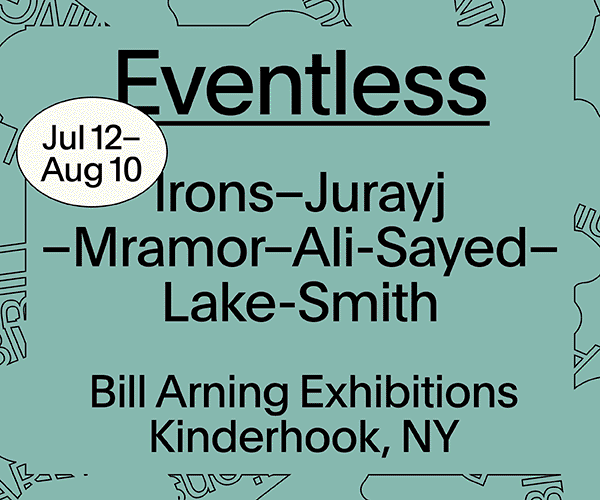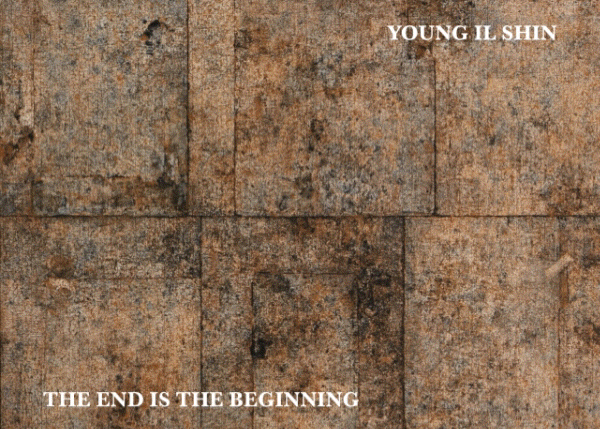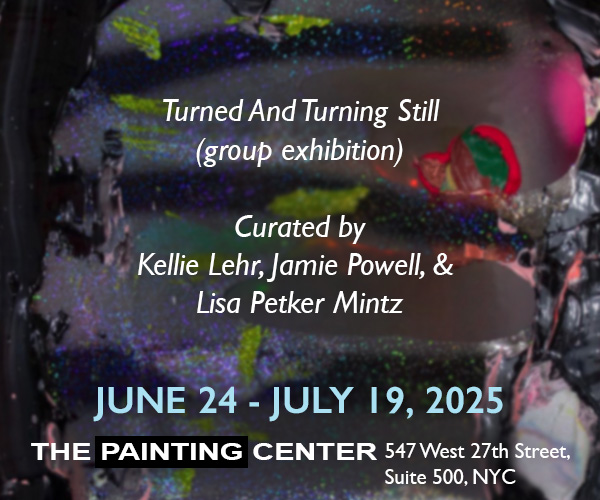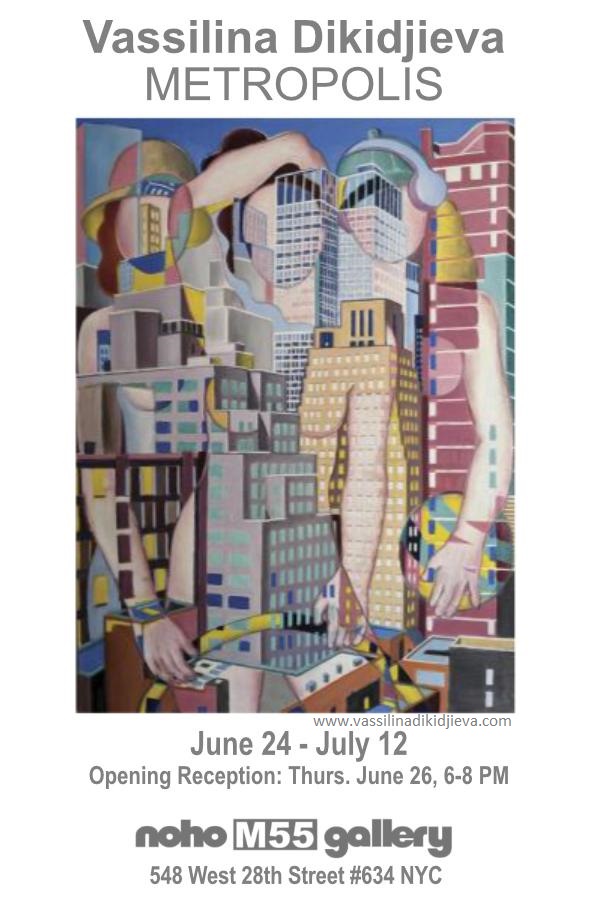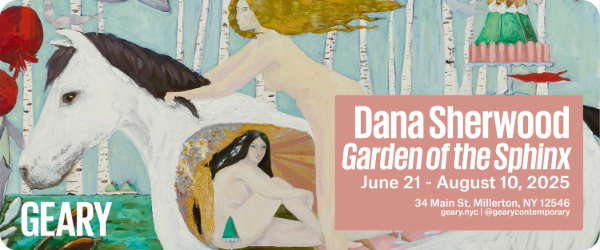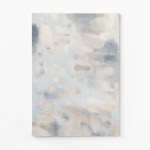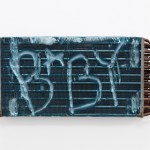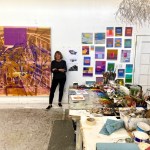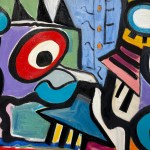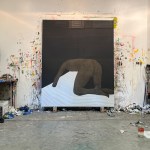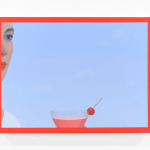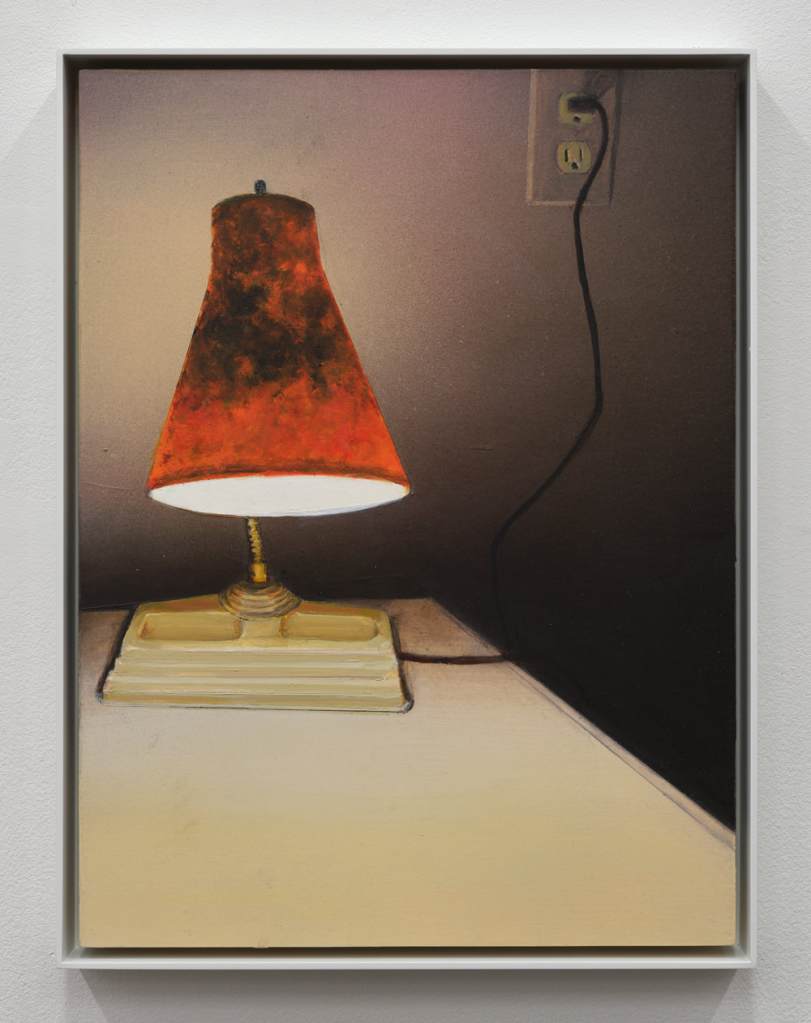
Contributed by David Whelan / The idea for the exhibition “Dike Blair: Matinee,” now at the Edward Hopper House, came from a discussion the artist had with curator Helen Molesworth in front of Edward Hopper’s 1938 painting New York, Movie. The picture is split in two: on the left a black-and-white film plays on a movie screen, and on the right a stairway leads away from the film, perhaps outside. In front of the stairway is a female usher, leaning languidly at the threshold, bathed in ambient light. The usher, the viewer, and possibly even Hopper himself stand at the boundary, resonating an ambivalence towards a life mediated by technology.
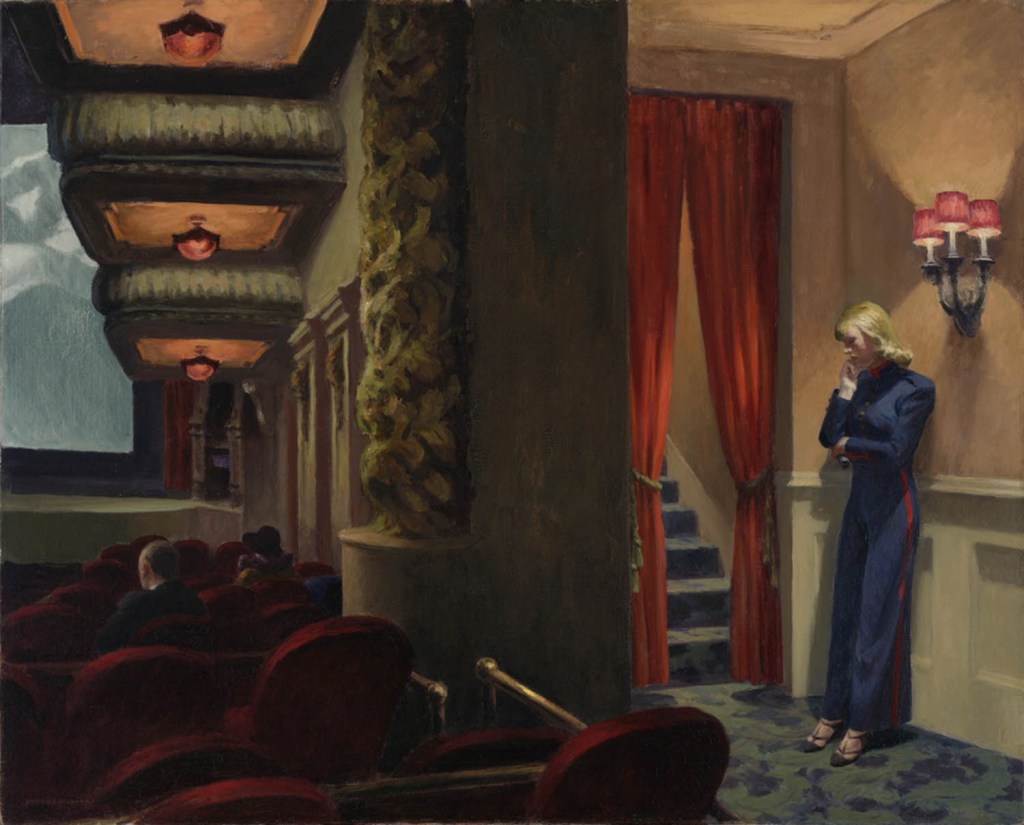
Dike Blair’s fifteen paintings and gouaches, carefully installed in Hopper’s childhood home, operate at a similar threshold. Blair paints from photographs taken from his everyday life, first editing the images in photoshop. Perhaps on account of this layered process, I found images of Blair’s work cold and dispassionate. The paintings are far more engaging in person. Clearly handled and worked through, they add a surprising painterliness to the photographic image. Just as Hopper keeps us suspended in his theater, at once in the movie and elsewhere, Blair keeps us midway between photo and painting, light and dark, attention and detachment.
The first painting that struck me was an untitled work of a lone desk lamp. A blemished bright-orange lampshade points downward, a single piercing light in a darkened room. To the side an electrical cord zig-zags into the distance, plugged into an outlet. The painting reminded me of my own desk at home, a place of resolute focus and, at times, one where I go to be alone. I was drawn less to the subject matter than to the painterly moment on the surface: a single area where Blair lowers the back edge of the table, leaving a trace of its previous position. Seeing this little adjustment endeared me to the work and the artist’s thought process. This is the Blair I could only see in person.
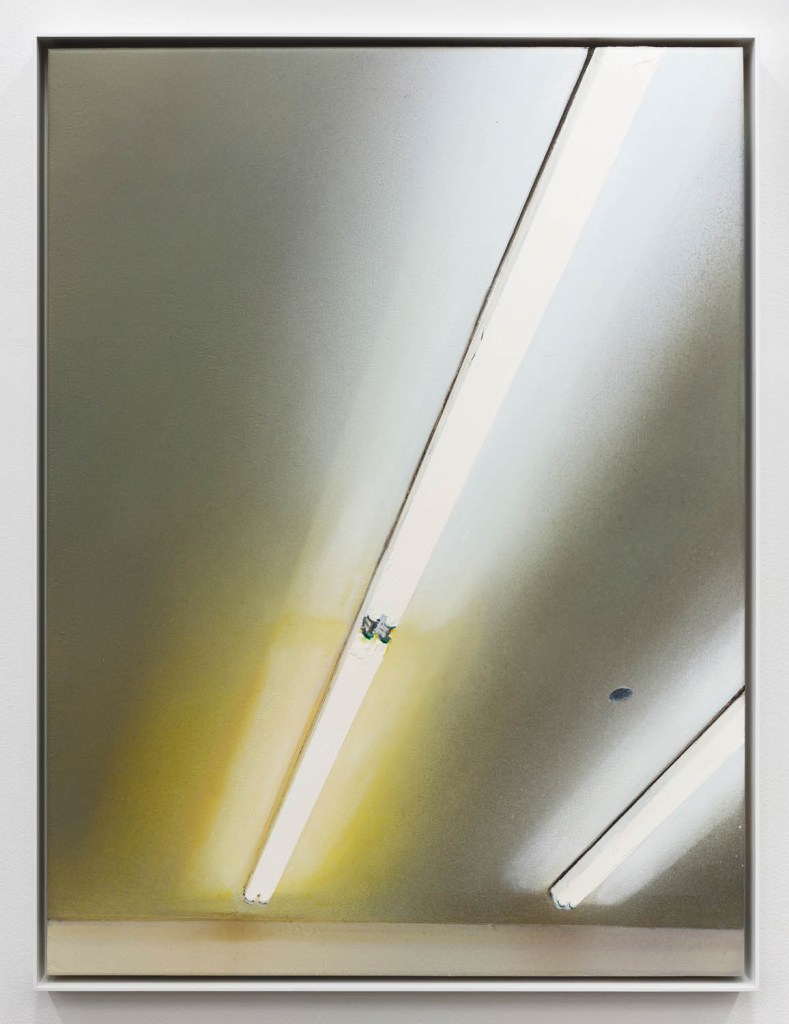
Nearby is another representation of artificial light, this one an oil painting of fluorescent bulbs. Unlike the downward-facing desk lamp with its concentrated light, the bulbs radiate outward across a gray ceiling. From the other side of the room, the image is instantly recognizable, but in close, where the bulbs fit into their sockets, the representation breaks down. Here Blair has painted in an impressionistic manner, reducing pins and sockets to dashes and splotches of paint. He is a master of rendering, but what intrigues me most is how and where he chooses to abstract the image. It is a pleasant revelation to see how this point of connection, where bulb meets socket, is also where representation collapses into beautiful abstraction.

An untitled painting of a nocturnal scene is the most bewildering of the show. At its center, a circular light beams towards us. It’s unclear whether it is a moon hanging low in the sky, a street lantern, or maybe even a lighthouse. Whatever it is, the mysterious night light cuts through the surrounding fog, scanning the scene like a sentinel. In the foreground is the silhouette of a car and through it perhaps a parking garage, glowing in that special way buildings do after-hours. I was most curious about a lime-green reflection across the car’s window. I didn’t know if it came from outside the car or was created by Blair’s camera flash. The stain was visually harmonized within the picture, but also hard to identify, evoking my own memories of feeling out of place.
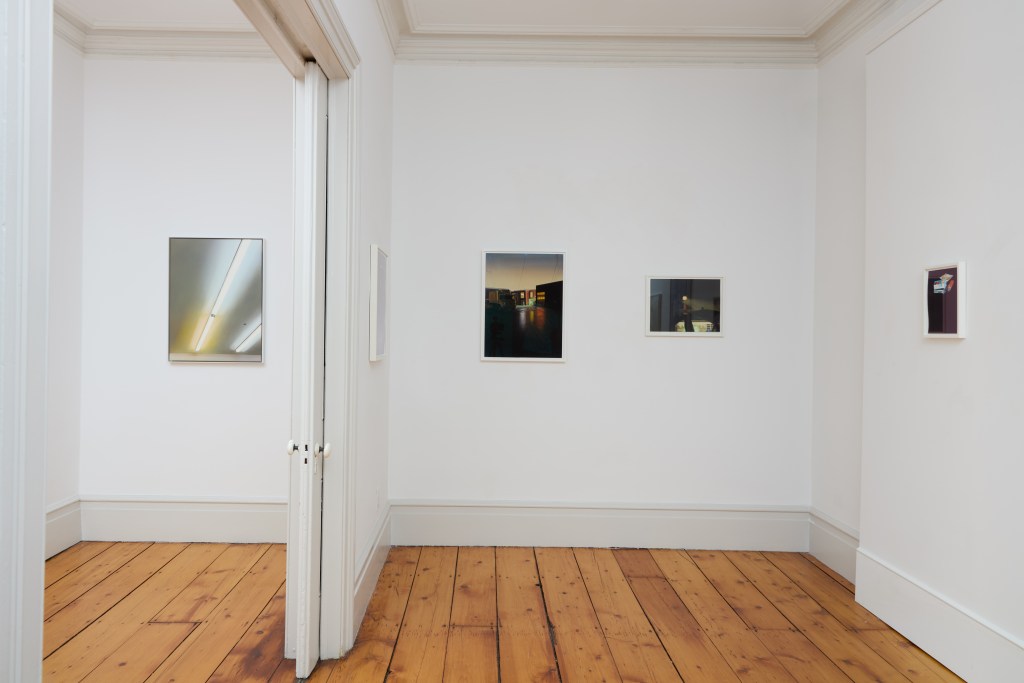
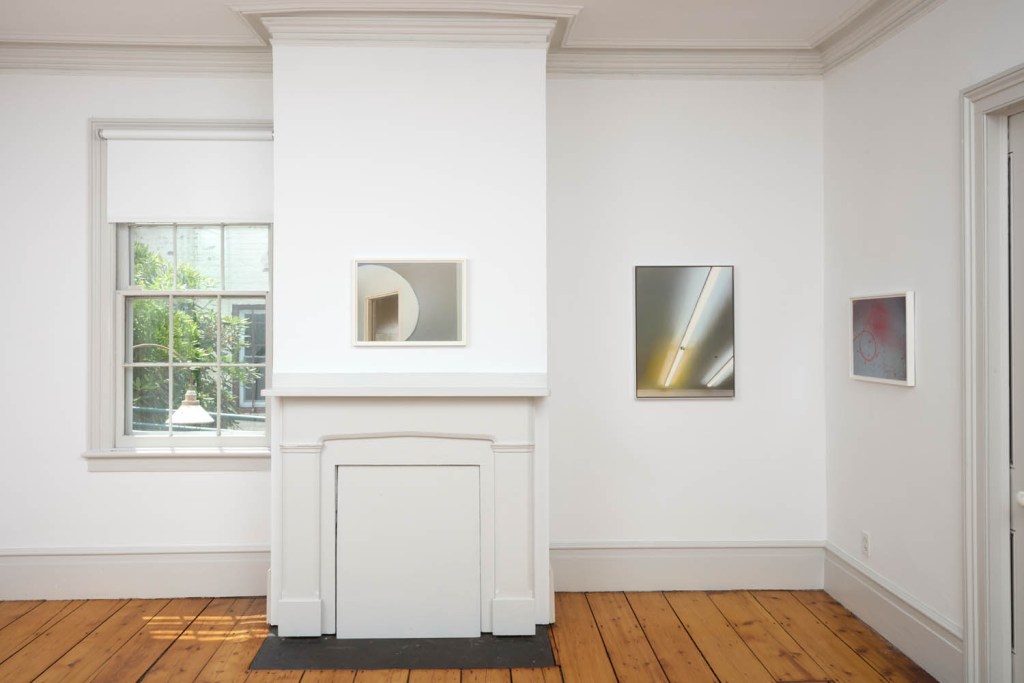
New York, Movie is a painting tinged with sadness, despite being made with exquisite care and enjoyment. It represents the technology of film and touches on its effects – fragmentation, fascination, and estrangement – of which Hopper seems both observant and woeful. Blair’s paintings, however, don’t carry a specific commentary or opinion. They are meditations on common things that seem unworthy of attention until pointed to and seen; the unimpressive little details surrounding each of us right now. In this show, light is the primary subject, the thing that makes things visible. It is not a godly or natural light, but rather an artificial one – the light of relentless human presence, detached and otherwise.
“Dike Blair: Matinee,” Edward Hopper House Museum & Study Center, 82 North Broadway, Nyack, NY. Through October 27, 2024
About the author: David Whelan is a painter living in Brooklyn. He has published art reviews in The Brooklyn Rail, Effects Journal, and Artforum, among other publications.

